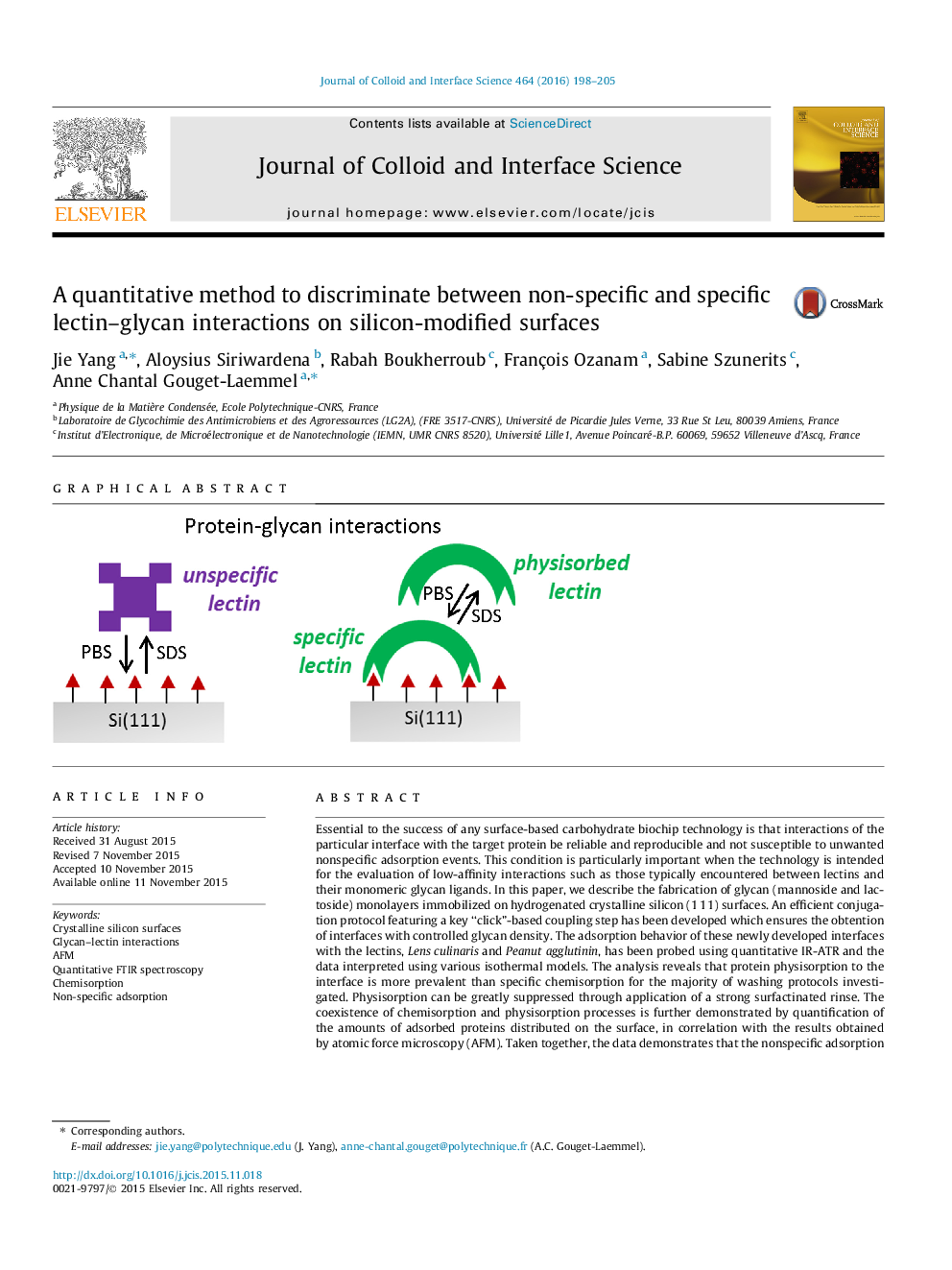| کد مقاله | کد نشریه | سال انتشار | مقاله انگلیسی | نسخه تمام متن |
|---|---|---|---|---|
| 606458 | 1454531 | 2016 | 8 صفحه PDF | دانلود رایگان |
Essential to the success of any surface-based carbohydrate biochip technology is that interactions of the particular interface with the target protein be reliable and reproducible and not susceptible to unwanted nonspecific adsorption events. This condition is particularly important when the technology is intended for the evaluation of low-affinity interactions such as those typically encountered between lectins and their monomeric glycan ligands. In this paper, we describe the fabrication of glycan (mannoside and lactoside) monolayers immobilized on hydrogenated crystalline silicon (1 1 1) surfaces. An efficient conjugation protocol featuring a key “click”-based coupling step has been developed which ensures the obtention of interfaces with controlled glycan density. The adsorption behavior of these newly developed interfaces with the lectins, Lens culinaris and Peanut agglutinin, has been probed using quantitative IR-ATR and the data interpreted using various isothermal models. The analysis reveals that protein physisorption to the interface is more prevalent than specific chemisorption for the majority of washing protocols investigated. Physisorption can be greatly suppressed through application of a strong surfactinated rinse. The coexistence of chemisorption and physisorption processes is further demonstrated by quantification of the amounts of adsorbed proteins distributed on the surface, in correlation with the results obtained by atomic force microscopy (AFM). Taken together, the data demonstrates that the nonspecific adsorption of proteins to these glycan-terminated surfaces can be effectively eliminated through the proper control of the chemical structure of the surface monolayer combined with the implementation of an appropriate surface-rinse protocol.
Figure optionsDownload high-quality image (129 K)Download as PowerPoint slide
Journal: Journal of Colloid and Interface Science - Volume 464, 15 February 2016, Pages 198–205
